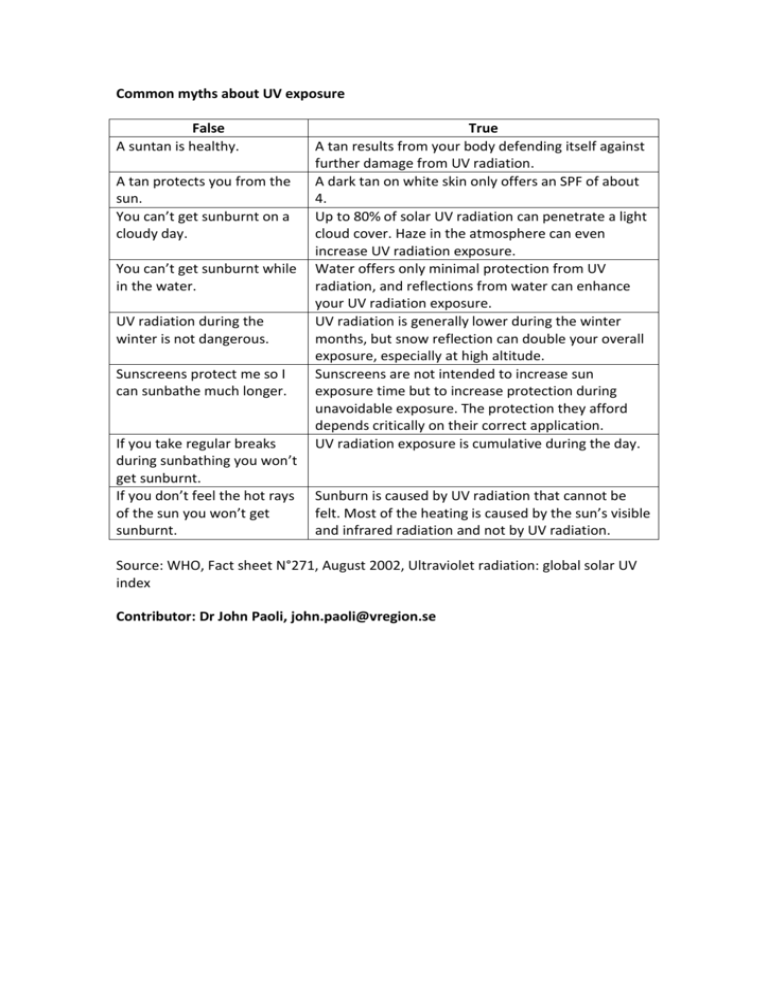UV exposure myths
advertisement

Common myths about UV exposure False A suntan is healthy. A tan protects you from the sun. You can’t get sunburnt on a cloudy day. You can’t get sunburnt while in the water. UV radiation during the winter is not dangerous. Sunscreens protect me so I can sunbathe much longer. If you take regular breaks during sunbathing you won’t get sunburnt. If you don’t feel the hot rays of the sun you won’t get sunburnt. True A tan results from your body defending itself against further damage from UV radiation. A dark tan on white skin only offers an SPF of about 4. Up to 80% of solar UV radiation can penetrate a light cloud cover. Haze in the atmosphere can even increase UV radiation exposure. Water offers only minimal protection from UV radiation, and reflections from water can enhance your UV radiation exposure. UV radiation is generally lower during the winter months, but snow reflection can double your overall exposure, especially at high altitude. Sunscreens are not intended to increase sun exposure time but to increase protection during unavoidable exposure. The protection they afford depends critically on their correct application. UV radiation exposure is cumulative during the day. Sunburn is caused by UV radiation that cannot be felt. Most of the heating is caused by the sun’s visible and infrared radiation and not by UV radiation. Source: WHO, Fact sheet N°271, August 2002, Ultraviolet radiation: global solar UV index Contributor: Dr John Paoli, john.paoli@vregion.se






